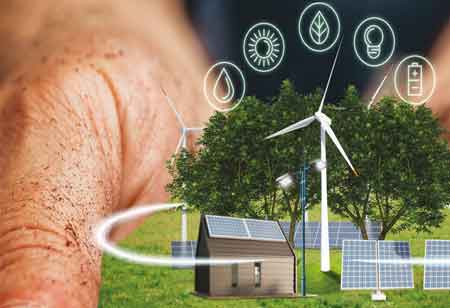Sam Sadeghi is an accomplished and dynamic professional with a proven record of driving culture and business transformation to deliver tangible results. He is a collaborative leader with a deep passion for leveraging team's potential to make data-driven strategic decisions and deliver complex cross-functional projects. His over two decades of progressive leadership experience in diverse roles in the energy sector is a testament to his expertise and knowledge. Sadeghi being a seasoned professional is driven by a passion for safety, team development, continuous improvement, and an unwavering commitment to customer service. His extensive background reflects a commitment to fostering a positive work culture, achieving business objectives, and navigating the ever-evolving landscape of the energy industry with resilience and proficiency. Currently, Sadeghi serves as Vice President, Asset Management and Distribution Operations at Elexicon Energy.
Please share with our readers your current roles and responsibilities.
I currently serve as the Vice President, Asset Management and Distribution Operations at Elexicon Energy. This is a newly established utility and ranks fourth among Ontario's municipally owned utilities. I oversee various critical functions within the organization. This includes managing the asset management team, the cybersecurity team, the control center, the stations' protection and control team, as well as the operations team. In addition, I also provide direction for the program delivery group.
Can you share some of the challenges you notice in the industry?
So there are several challenges in the industry that I have noticed. One primary challenge involves finding a proficient workforce essential for delivering the required capital and maintenance program. This is crucial to ensure the provision of safe and reliable energy to the company's customers. The energy sector's ongoing transformation, marked by the introduction of non-wire alternatives and the integration of new technologies into the existing design framework, presents another significant challenge. Regulatory challenges further add to it where a regulated utility must adhere to the regulations outlined by the Ontario Energy Board, especially when it comes to modernizing its grid infrastructure.
Ensure to create a collaborative, progressive, and customer-centric work culture where all resources and staff members are fully engaged
Amidst these challenges, there is a significant amount of new development happening. As a result, the service team undergoes substantial growth, necessitating a robust strategy for connecting new customers. The shift towards net-zero emissions has introduced changes in energy sources. The sources of energy that used to be hydrocarbon-based fuels with emissions are now transitioning to electricity to reduce the emissions. This has resulted in a significant amount of new loads being added to the grid, resulting in a continuous upgrade of infrastructure to provide safe, reliable, affordable, and sustainable electricity to customers, aligning with evolving energy demands.
In addition, cybersecurity emerges as a pivotal concern for most of the local distribution companies. This calls for safeguarding the grid and digital infrastructure to maintain the integrity and security of the energy distribution system.
What are some of the initiatives you employ to overcome these challenges?
We are engaged in various strategic initiatives. In terms of cybersecurity, we continuously invest in fortifying digital assets, ensuring a secure environment. To tackle the challenge of finding skilled resources, we are fostering collaborations with different trades, colleges, and trade schools, establishing partnerships that create a talent pipeline to meet the company's needs. Concerning the design of the grid, with a focus on accommodating customer load growth and electrification, we continuously evaluate diverse options, considering non-wire alternatives (NWAs) to ensure the delivery of safe, reliable, and affordable electricity to its customer base.
How do you envision the future of this industry?
Several technological changes are happening. This includes the emergence of distributed energy resources (DER), battery energy storage units, and long-duration energy storage which are batteries capable of supplying power to the load for extended periods. Another notable shift is the introduction of hydrogen as a clean energy alternative, replacing carbon-emitting sources. These technological developments underscore a dynamic landscape within the energy sector. Amidst these changes, overarching themes influencing the energy sector are the three D’s: decarbonization, decentralization, and democratization. Traditionally, the utility model featuring a unidirectional flow of electricity to customers is evolving into a multi-directional framework. Customers, now potential producers, may possess energy sources like solar panels, battery storage, or wind generation on their premises. This transformative shift empowers them not only as consumers but also as contributors to power generation. The emphasis on decarbonization is evident, reflecting a collective commitment to reduce carbon footprints. Simultaneously, decentralization reshapes the power dynamic, moving beyond the conventional model where utilities solely provide power to customers. The evolving landscape envisions customers actively participating in transactions with the grid, reflecting a more interactive and collaborative relationship.
What is your piece of advice to your fellow peers?
Ensure to create a collaborative, progressive, and customer-centric work culture where all resources and staff members are fully engaged. The emphasis is on maintaining a constant focus on the customer in every decision-making process, ensuring safe, reliable, affordable, and sustainable electricity is provided. Looking forward, one can no longer stick to past approaches to evolve and adopt new methodologies. The future of the grid demands innovative approaches where we adapt and adopt them.


